Last updated on February 1st, 2024 at 11:02
Spending your hard earned money on top quality espresso beans is great for making truly awesome coffee, but can you use espresso beans for coffee other than a shot of espresso?
If you do make regular coffee from espresso beans, what will the end result be like?
Will you end up with a great cup of coffee or is it best to keep those beans for making an authentic espresso and espresso drinks?
This is exactly what I’ll discuss in this article and includes the effect of brewing coffee with espresso beans using a variety of brewing methods and techniques.
Are you ready to find out all you need to know?
Yes?
Then grab a chair and keep reading!
What Are Espresso Beans?
Table Of Contents
- 1 What Are Espresso Beans?
- 2 Can You Use Espresso Beans For Regular Coffee?
- 3 What Happens If You Make Coffee With Espresso Beans?
- 4 How To Make Regular Coffee From Espresso Beans
- 5 Can You Use Espresso Beans For Cold Brew Coffee?
- 6 Can You Use Espresso Beans For Pour Over Coffee?
- 7 Can I Use Espresso Beans For French Press?
- 8 Can You Make Drip Coffee With Espresso Beans?
- 9 Frequently Asked Questions About Can You Use Espresso Beans For Coffee
- 10 Frappé-Ing It All Up – Can You Use Espresso Beans For Coffee?
Espresso beans are regular coffee beans that have been roasted for a little longer and at a slightly higher temperature than other coffee beans.
All coffee beans, regardless of the roast, start their lives exactly the same. They begin their life on the coffee plant, grow, their coffee cherry gets picked, and the pulp removed to reveal the coffee seed – the part that we later use to brew our cup of coffee.
All coffee beans start out as green coffee beans and then get roasted to one of 4 coffee roast levels, which are light roast, medium roast, medium-dark roast and dark roast. An espresso roast is a dark-roasted coffee bean, more particularly a French roast.
An espresso bean must be dark roasted as this roast level produces more oil on the surface of the beans due to the roasting process bringing the coffee oils from deep inside to the exterior surface.
This oil is important for making an espresso coffee and getting that rich thick crema on top.

Read: How long does brewed coffee stay fresh?
Can You Use Espresso Beans For Regular Coffee?
Technically, it is most certainly possible to make regular coffee with espresso beans and vice verse. The main and overriding difference is not the coffee beans roasting profile themselves but the other variables, such as the grind size, brewing time and the method of brewing.
You can make a good quality black coffee and an espresso using the same espresso beans, but don’t try to prepare the beans the same way or use the same brewing technique.
Both are very different coffees and are made in very different ways. Don’t expect to get an espresso shot without using a proper espresso machine or a good black coffee when using the same fine powder like grind using a French press.
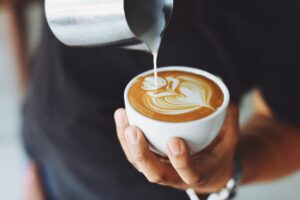
Read: How many espresso beans in a shot?
What Happens If You Make Coffee With Espresso Beans?
With the right grind size, brewing time and technique, you can end up with a great tasting full-bodied rich coffee flavor typically, with chocolatey and nutty notes.
An espresso blend is in the most basic and simplest of terms, a blend of dark roasted coffee beans that the roaster believes will work very well when used to make a delicious espresso drink and espresso-based drinks like a latte, cortado, flat white and a cappuccino, for example.
Some espresso blends will inevitably taste a little weak, off or blunt and bland when you use them to make a drip coffee or a pour over coffee.
How To Make Regular Coffee From Espresso Beans
It is not difficult at all to make a regular Cuppa Joe using your espresso beans, as they are usually quite versatile.
In the following sections, I will talk about, in a step-by-step fashion, how to make a regular coffee using a variety of brewing methods and techniques, starting with cold brew coffee.
Can You Use Espresso Beans For Cold Brew Coffee?
Cold brew is my favorite summer coffee brewing method. Few coffees are better than a nice, cool, well chilled cold brew coffee, which can be made with a variety of roasting profiles and still be a fantastically refreshing coffee.
Let’s get started!
Equipment Needed
There is very little in the way of equipment that is needed to make this rather great and very refreshing Java. All you need is:
- 1. A cotton coffee filter, or reusable cloth filter. A metal filter or filter paper is fine also.
- 2. A coffee grinder.
- 3. A large container or large mug.
- 4. Espresso coffee beans.
The Method
This is not only one of the best Cuppa Joe’s to make – and one of the tastiest brews, to boot, is one of the easiest to brew!
Measure your water, and make a good-sized batch, since this takes forever to brew, literally!
Once you have measured your water, better still, weigh it. I strongly advise you to use filtered water or mineral water to get the best possible water and best quality as an end result.
You can even experiment with different water types and even use sparkling water and tonic water.
Assuming you are brewing a liter (34 Ounces) and sticking to a good coffee to water ratio of 1:8 you will need to use 125 grams (4.25 ounces).
I find it best to weigh the whole beans as the weight of a whole bean and a ground bean is exactly the same. By weighing a whole bean, you will know exactly how many you are going to use and can keep your grinder hopper empty and clean and thus grind them just as you are going to brew and ensure maximum freshness.
The next step is simple. Grind your beans to coarse grind size. As large as your grinder permits. You are looking for sea salt gravel like.
Pour your water into a container, preferably a glass container with an airtight lid, and add your grounds.
Then simply put your container in the fridge and let it brew away. I have a very strong preference for letting it brew in the fridge; it’s my OCD with freshness!
Let it sit there and brew for 12 to 24 hours and check up on it after 12 hours and then every 4 hours to check on the strength of your brew while being very careful not to over extract your coffee and end up with a cold brew that is overtly bitter.
Once you have your coffee exactly as you want it and like it proceed to decant and filter out the coffee grounds. The best filter types in order is metal – a sieve is fine, an organic unbleached cotton filter and then an organic, unbleached paper filter.
A metal filter will leave all the aromatic coffee oils in the brew; a paper filter will remove all the coffee oils while a cotton filter will remove only some coffee oils. Naturally, I prefer that you use a metal filter to leave all the oils in the brew and enjoy it to the maximum.
Then serve and enjoy.

Can You Use Espresso Beans For Pour Over Coffee?
Yes, espresso beans do work very well for pour over coffee and if brewed well, you can end up with a very nice smoky, deep flavor with slight bitter hints.
With the pour over brewing method very little equipment is needed.
- Filter holder and coffee filter.
- Espresso roasted coffee beans
- A gooseneck kettle
A gooseneck kettle is not essential but is highly advised if you are a regular drinker of brewed coffee. You will get a much better control over the pour and, as a result, a more even extraction.
Step 1: Measure And Boil
Measure and boil your water. Measure out 600ml (20 ounces) and using your electric digital gooseneck kettle, set the temperature to between 92C and 96C (195F to 205F). Or boil your water and let it sit for a minute.
Measure and weigh your coffee sticking to a coffee to water ratio of 1:15. For 600ml (20 ounces) of water that is 40 grams (1.33 ounces).
Step 2: Grind It Up
Grind your beans to a coarse grind that resembles sea salt. The maximum setting on your grinder is ideal.
Step 3: Set Up Your Filter And Holder
Set up your filter and filter holder. If you are using a paper or cotton filter, pour a little water to wet it and help keep it in place.
Step 4: Add Your Grounds
Add your grounds to the coffee filter and holder. Slowly and evenly. Shake your equipment very lightly with the aim of settling your grounds, so they are flat and even.
Step 5: Bloom Your Grounds
Add a little water to your grounds, submerging them a little. Pour in a very controlled manner with a pencil thin stream of hot water pouring from the spout of your gooseneck kettle. Pour in a slow and even manner in a circular fashion, covering your grounds evenly.
Once your grounds are submerged, allow them to bloom a little, for 20 to 30 seconds.
You see a blossoming effect as they expand a little and may even bubble a little as they give off carbon dioxide.
Step 6: Continue Your Pour
In the same slow, controlled manner, proceed to pour the rest of your water in stages, ensuring not to submerge or drown your grounds. Slow, circular motion and a pencil thin stream is the key to good even extraction.
This may take up to 4 pours. Patience is the key here. It is almost meditative.
Step 7: Enjoy Your Coffee
Serve and enjoy your cup of coffee! Bottoms up!
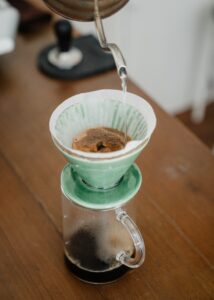
Can I Use Espresso Beans For French Press?
Like the other two methods above, and it is a resounding yes!! Just be aware that you will not be able to brew an espresso or anything that resembles an espresso shot with your French press as it is a device that simply does not produce the pressure required for that.
You can still get a very good cup of coffee though.
The French press is one of the best ways to brew your specialty beans.
Again, very little in the way of equipment is needed other than your French press.
Making that great French press coffee with espresso beans step by step.
Step 1: Heat Your Water
Heat your water to a temperature of 195F to 205F (92C to 96C). For a good cuppa, use 16 ounces (480ml) of water.
Step 2: Weigh Your Coffee Grounds
Step 3: Prepare Your Grounds
Step 4: Bloom Your Coffee Grounds
Step 5: Fill Your French Press
Step 6: Brew Your Coffee
Step 7: Pour Your Coffee
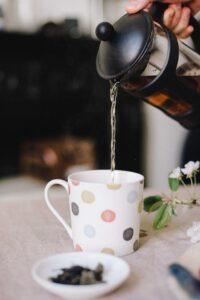
Can You Make Drip Coffee With Espresso Beans?
Without a doubt, you can make a rather excellent cup of drip coffee using espresso beans. It is entirely up to you if you want to use an automatic drip coffee maker or the good old-fashioned manual drip method.
Very little equipment is required other than an automatic drip brewing machine.
Step 1: Prepare And Measure Your Water
Prepare your water by ensuring you are using filtered water. The better the quality of your water, the better your coffee will be.
Prepare a good-sized cup and pour 16 ounces of water into your automatic drip machine.
Step 2: Weight And Prepare Your Coffee Grounds
Using a 1:15 coffee to water ratio and measure 32 grams of coffee (1.1 ounce) for brewing a good 16 ounce cup of drip coffee.
Grind to a medium to coarse grind size. A setting number that is 3/4 or 75% of that of the maximum size. For example, if there are 20 settings with 20 being the largest grind size, use setting number 15.
Step 3: Put Your Grinds In Your Machine
Put your coffee beans in your coffee filter basket. Press the on button to start the brewing process. And wait.
Step 4: Once your Coffee Is Ready, pour and enjoy
Drip coffee is great. Some high-end machines do give good quality, even distribution of drip spraying the water.
Frequently Asked Questions About Can You Use Espresso Beans For Coffee
Are Coffee Beans And Espresso Beans The Same?
Yes, espresso beans are coffee beans that have been roasted to a greater and higher roast level by roasting for a little longer and at a higher temperature than other coffee beans. Any coffee bean can be roasted to become an espresso bean.
Is Espresso Coffee The Same As Regular Coffee?
No, a shot of espresso is a focused and strong shot of coffee that uses a dark roast, and a coffee to water ratio of 1:1.5. A very fine powder like grind size is used. An espresso coffee is whole brewing method and process and a particular type of coffee. Regular coffee, uses a coarser grind and a coffee to water ratio of 1:16 and is notably lighter and more liquid.
Can I Use Espresso Ground Coffee In a Regular Coffee Maker?
No, you can use an espresso roast but not an espresso ground coffee as an espresso grind is powder sized grind of 200 microns and will end up clogging your machine. The finer grind will not allow water to flow so easily and thus the water will overflow.
A drip coffee maker needs a medium–coarse grind size. You can use an espresso roast that has been ground to this size.
Can You Eat Espresso Beans?
Yes, you can eat espresso coffee bean. It is a popular snack that you can find at Starbucks and many coffee shops. Often they are covered in chocolate.
Coffee beans as a snack, the darker the roast the softer and easier they are to eat. Light roasts are just too hard!
Do Espresso Beans Have More Caffeine?
No, espresso beans actually have slightly less caffeine than medium and light roasted coffee beans. The higher a coffee is roasted to, the less caffeine they contain.
A shot of espresso has 65 mg to 75 mg of caffeine which is far less than a cup for drip coffee or a flat white. Where an espresso excels in terms of caffeine content is that it has more caffeine per ounce than other beverages. This is due to the very focused coffee to water ratio of 1:2.
Is Ground Espresso The Same As Instant Coffee?
No, ground espresso is coffee beans from an espresso roast that has been ground. A ground espresso has not been processed nor is it water-soluble. You need to brew ground espresso.
Instant coffee is freeze-dried and processed and 100% water-soluble. There is no need to brew instant coffee, just add water!
Frappé-Ing It All Up – Can You Use Espresso Beans For Coffee?
The answer to this pertaining question – can you use espresso beans for coffee has been definitively answered here, and the answer is a resounding yes! You can make an excellent cup of regular coffee with espresso bean and using a variety of brewing techniques as demonstrated.
Above all with the right grind size, coffee to water ratios and brew times, you will end up with a very tasty cup.
Join our cool coffee club and take part by sharing your great coffee recipes, creations and I double dare you to post your coffee memes and jokes! Find us on Facebook/Meta.


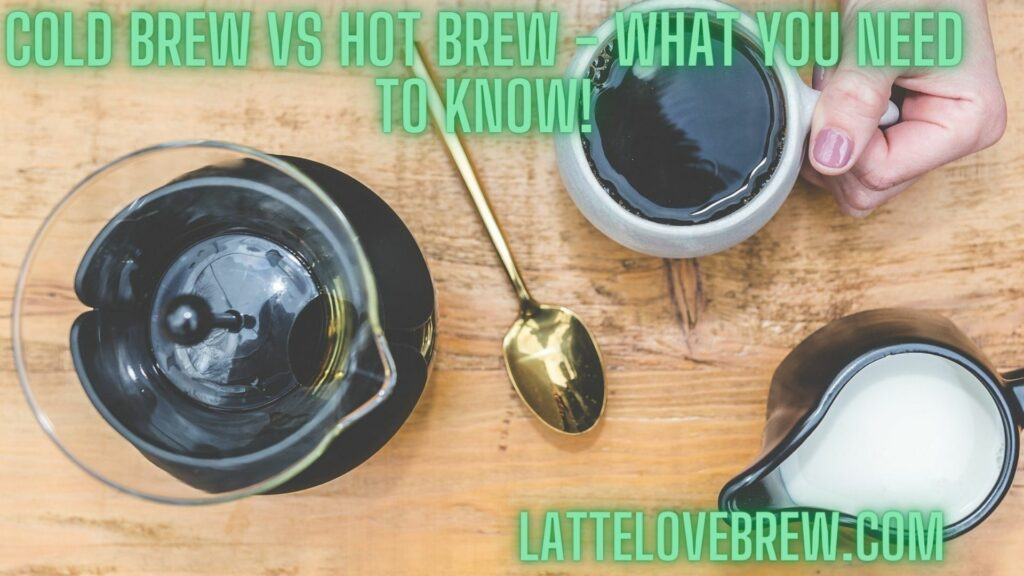


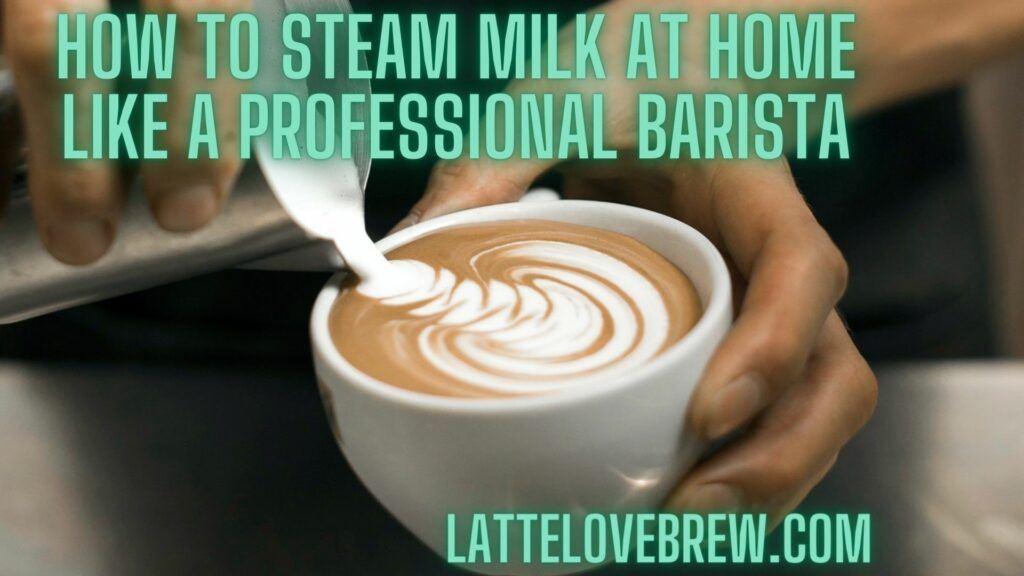
![[Recipe] How To Make Dunkin Iced Coffee At Home Like A Pro!](https://lattelovebrew.com/wp-content/uploads/2022/04/Recipe-How-To-Make-Dunkin-Iced-Coffee-At-Home-Like-A-Pro-1024x576.jpg)
